
Muscle pain is a commonly reported issue that can result from an injury, exercise, or daily wear and tear. While several over-the-counter and prescription treatments are available, an increasing number of people are turning to natural remedies, such as essential oils, for muscle pain relief. These oils offer soothing, analgesic, and anti-inflammatory properties, making them effective and sought-after for relieving muscle pain and discomfort.
In this comprehensive blog, we will discuss how essential oils can provide relief from muscle pain, identify the best essential oils, and provide guidance on their safe use for optimal results.
What Are Essential Oils?
Essential oils are concentrated extracts of plants. Essential oils can be used in aromatherapy, a type of complementary medicine that utilizes scent to enhance health, or applied topically to the skin [1].
Why Can Essential Oils Help With Sore Muscles?
We describe sore muscles as microscopic tears in the muscle fibres resulting from intense exertion or unaccustomed movement. Micro-muscle injuries are usually associated with inflammation. One way to speed up the repair process is to stimulate blood circulation. Inflamed tissue particles can then be removed quickly.
The mode of action of each essential oil varies. Depending on the ingredient, the fragrant oils can have a positive effect on our regeneration. For example, there are specific essential oils that promote blood flow and inhibit inflammation [2].
Essential Oils For Muscle Pain

There are numerous essential oils with pain-control properties, but we have narrowed down some of the best essential oils for sore muscles.
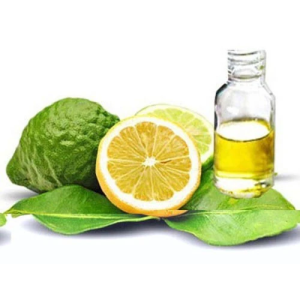
Bergamot oil
Bergamot oil is a cold-pressed essential oil that comes from the bergamot orange fruit [3].
Bergamot has analgesic properties, which may help alleviate muscle pain or soreness. It may also have a positive effect on mood and improve sleep quality.

Clove oil
Clove oil is derived from the clove plant and may help alleviate muscle-related pain and inflammation. Clove oil has a warming and soothing sensation on the skin. This is why it is commonly used in massage therapy. Some individuals use this oil to help alleviate dental issues, such as toothaches; however, there is no evidence to support these uses.
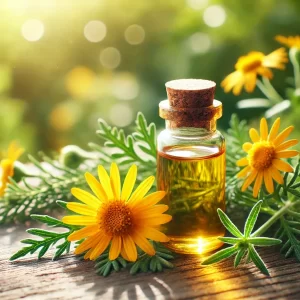
Arnica oil
Arnica oil is well known for its pain-relieving properties. There is some evidence that it may have anti-inflammatory and antioxidant properties. Arnica is often used to help with healing after undergoing surgery, particularly when it comes to bruising and swelling.
But it’s important to practice caution with arnica because it’s toxic if ingested, and some people may experience skin they use it on the skin.

Chamomile oil
There are varieties of chamomile flowers. However, two types, Roman and German, are commonly used in essential oils and herbal teas. They have different scents, but both may help alleviate pain, inflammation, and improve mood.
One study by Sepide Miraj and Samira Alesaeidi found that chamomile may improve joint function and the symptoms of osteoarthritis in the knee. Another study indicates that chamomile oil may reduce symptoms and improve function for individuals with mild to moderate carpal tunnel syndrome (a health condition that causes symptoms such as pain, tingling, numbness, and weakness in your wrist and hand.
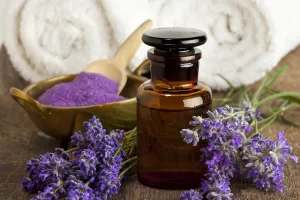
Lavender oil
Studies indicate that lavender oil has pain-relieving, stress-reducing, and anti-inflammatory effects. In a small research study, eight sessions of acupressure combined with lavender oil aromatherapy were found to help alleviate lower back pain in elderly individuals [4].
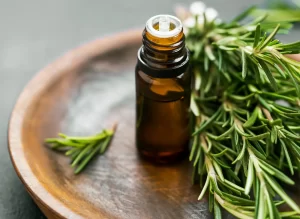
Rosemary oil
Maybe you are only familiar with rosemary in the kitchen. But the herb is not just for cooking. Rosemary oil can help alleviate muscle and joint pain, reduce swelling, promote hair growth, and aid in wound healing [5].
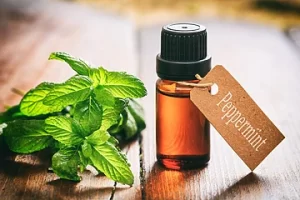
Peppermint oil
Peppermint oil contains menthol, which has a cooling effect on the skin, potentially numbing pain. In addition to easing joint pain and muscle aches, peppermint oil may help with headaches, digestive problems, and itchy skin [6].

Eucalyptus oil
Eucalyptus has a cooling effect on the skin. This is the reason many people use it as an after-sun spray to soothe sunburns. Animal studies suggest that eucalyptus oil may help soothe throbbing joint, muscle, and skin pain.
In one human study by Yang Suk Jun et al, adults who had knee replacement surgery reported reduced pain after using eucalyptus oil. They breathed it in for half an hour a day for 3 consecutive days.
Other Essential Oils That May Help With Pain
In addition to the essential oils listed above, several other oils may also be beneficial for alleviating muscle pain. These include clary sage oil, basil oil, black pepper oil, lemongrass oil, sandalwood oil, yarrow oil, and juniper oil.
How Do You Apply Essential Oils To Relieve Pain And Inflammation?

Ashley Allen, a certified nurse specializing in functional medicine, emphasizes the importance of diluting essential oils before applying them to the skin. A carrier oil, as its name implies, is a plant-based oil used to dilute essential oils and help carry them onto your skin safely.
Steps for applying essential oils for pain
Follow these steps to safely apply essential oils for muscle pain.
- Pick a carrier oil such as coconut, olive, or avocado oil.
- Mix the essential oil in the carrier oil. The National Association for Holistic Aromatherapy suggests a dilution rate of 2.5 for adults. That’s around 15 drops of essential oil per ounce of carrier oil. However, if you have never used essential oils or have sensitive skin, start with a 1% dilution rate. This is roughly 6 drops of essential oil per ounce of carrier oil.
- Do a patch test before. Apply a drop of your diluted oil onto your forearm. Cover the applied region with a bandage and wait for 24 hours. If you don’t experience any irritation, such as itching, redness, or burning, you are ready to start using diluted essential oil.
- Experiment with different ways of using essential oils. including
- Adding a few drops to your bath water
- Massaging it directly onto painful muscles or joints.
- Adding it to a warm compress and applying it to painful body parts.
What Are The Risks Of Essential Oils?
Essential oils are usually safe if used as directed. But in some individuals, these oils can cause negative reactions such as:
- Headaches
- Skin irritation
- Worsened asthma symptoms
When you are using any essential oil, be sure to avoid:
- Contact with your eyes
- Swallowing them
- Applying them to mucous membranes, like your genital region or lips.
How Do You Choose The Best Essential Oil Brand?

Here are three holistic tips to help you choose high-quality essential oils.
Purity – Look for essential oils that are 100% pure and avoid those with fillers or additives. 100% means the essential oils are not diluted with any other ingredients. Essential oils, when used as fragrance oils, are often not pure and may be adulterated with other additives. Also, ensure that you check the label for the botanical names of essential oils and the country of origin from which these oils are sourced.
Reputation – Choose a reputed brand with a food-grade certification to invest in essential oils. Choose a brand that provides transparency about its sourcing and testing practices. Look at the industry reputation, awards, or recognition that the three brands have achieved. Read the testimonials and reviews of the customers who have used the essential oils.
Cost – Compare prices across well-known brands. This is because an essential oil priced cheaply is not pure. Essential oils come at a cost because of their purity.
Alternatives To Essential Oils For Muscle Pain
There are several treatment options to help ease muscular aches and pain, including anti-inflammatory drugs, muscle relaxants, and acupuncture.
Muscle relaxers
If muscle pain is accompanied by muscle spasms or stiffness, muscle relaxants such as Soma (Carisoprodol) are the best muscle pain relief medication. They work by reducing muscle tension and promoting relaxation, which can help alleviate pain and discomfort.
Anti-inflammatory gels and rubs
Anti-inflammatory gels and rubs such as piroxicam, diclofenac, or ibuprofen treat the body’s inflammatory reaction to injury, promoting healing and reducing pain.
Acupuncture
Acupuncture may be used to reduce muscle pain. In acupuncture, thin needles are inserted into specific body areas to facilitate healing, thus reducing the discomfort.
Conclusion
Essential oils are a safe and easy-to-use remedy for muscle soreness or pain. However, these oils can irritate your skin, so it’s crucial to take some basic safety precautions before using them, such as diluting them with a carrier oil. Although essential oils may benefit some users, they might not work for everyone. However, if you use these oils safely, the risks are low enough that they are worth trying.
FAQs
What are some of the anti-inflammatory essential oils?
What are some of the essential oils for nerve pain?
What tea is good for muscle pain?
Which fruit is best for muscle recovery?
References
- 11 Essential Oils: Their Benefits and How To Use Them, Cleveland Clinic.
- 5 essential oils for sore muscles, blackroll.
- Bergamot essential oil, Wikipedia
- Antioxidant, analgesic, and anti-inflammatory effects of lavender essential oil, Scielo
- Rosmarinus officinalis L.: an update review of its phytochemistry and biological activity, ncbi
- The distinctive role of menthol in pain and analgesia: Mechanisms, practices, and advances, NCBI
- Everything you need to know about essential oils. Medical News Today.
- Top 3 factors to choose the high- quality essential oils, arezou.
